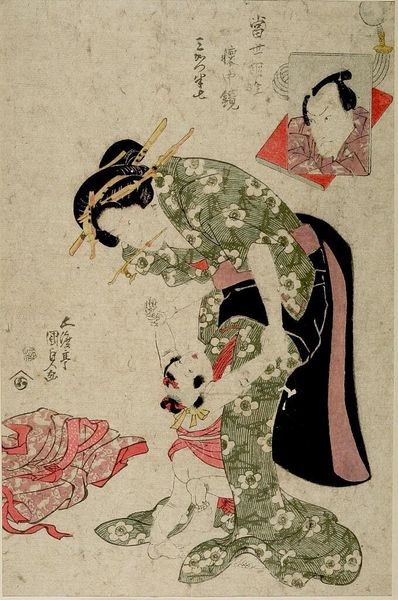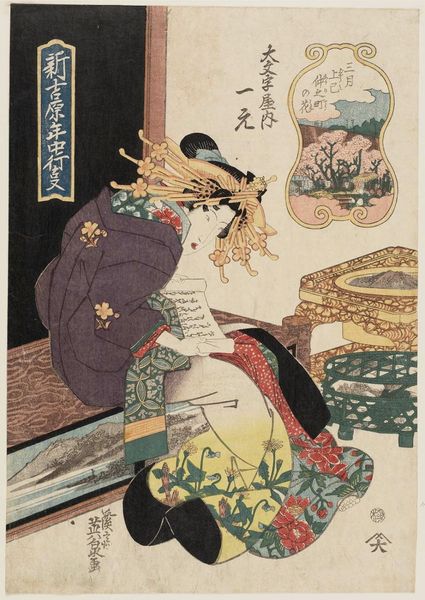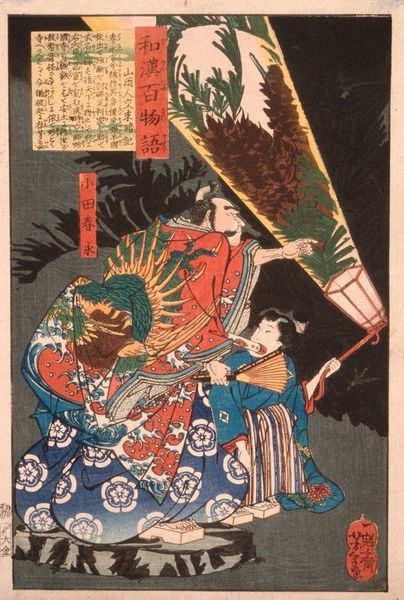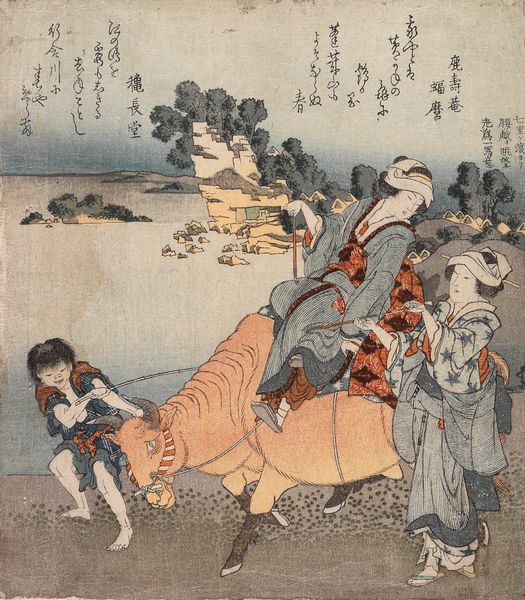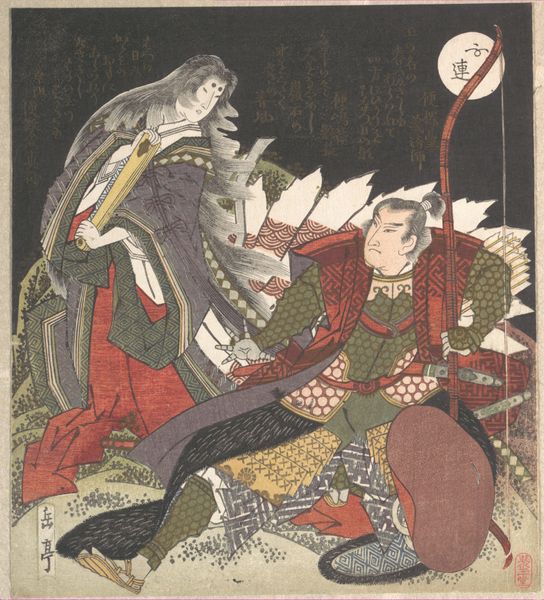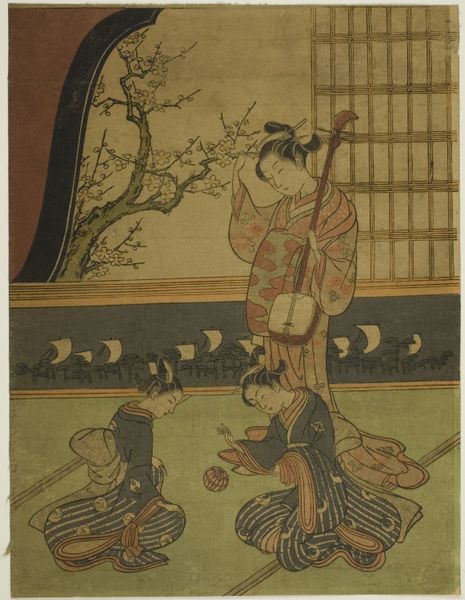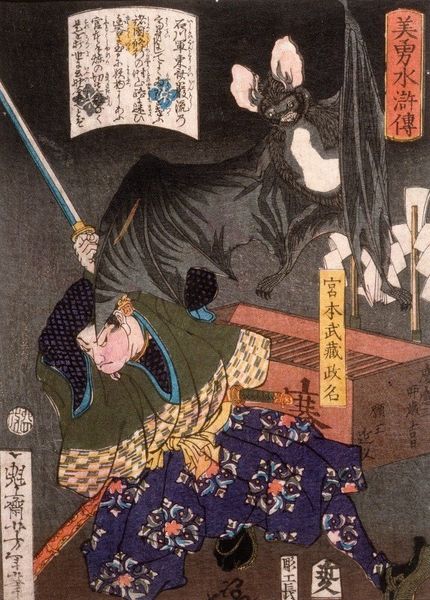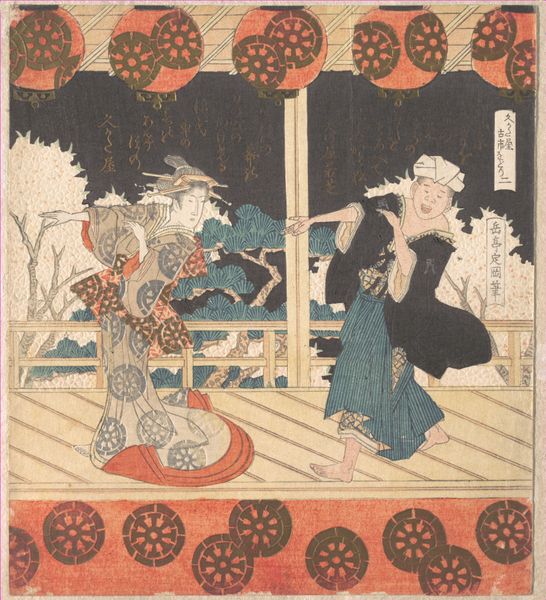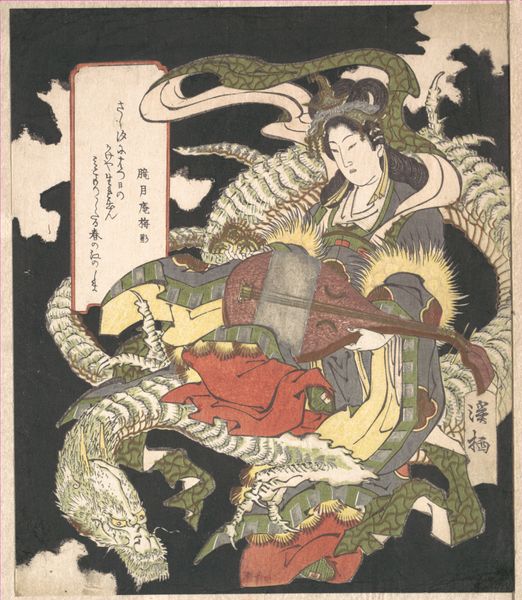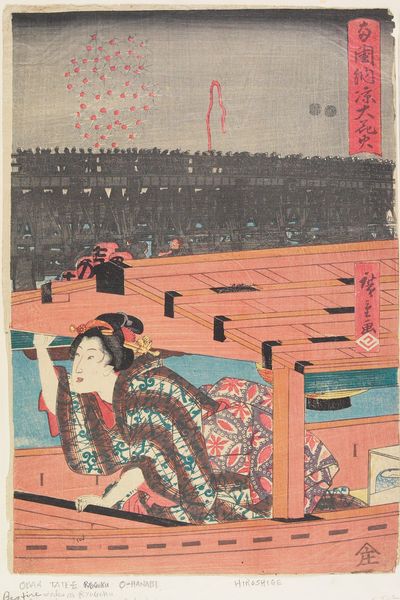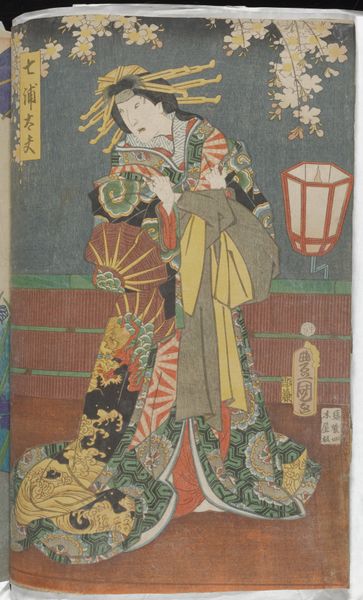
print, woodcut
#
portrait
#
narrative-art
# print
#
asian-art
#
ukiyo-e
#
figuration
#
woodcut
Copyright: Public domain
Editor: This is "Lu Zhishen," a woodcut print by Tsukioka Yoshitoshi. The intense detail is striking, particularly the character’s tattoos and muscular build. It has such a strong, physical energy, almost overwhelming. What jumps out at you? Curator: For me, it's the layered production processes at play here. Ukiyo-e prints like this weren't solitary acts of artistic genius. Consider the artist Yoshitoshi's design, then the carver who translated that design onto the woodblock, and finally the printer who meticulously applied pigments. How does thinking about this collective labor shift your understanding? Editor: That's fascinating. So, instead of focusing solely on Yoshitoshi’s artistic vision, we should consider the skilled craftspeople involved in bringing it to life? Does that also mean thinking about the quality of materials used like the wood, the ink and how that would affect the image? Curator: Precisely! The choice of wood affects the fineness of line possible; the quality of inks determines the vibrancy and longevity of the print. And we shouldn’t forget the social context either. Who was consuming these prints? Were they luxury items or more widely accessible? The material conditions of production deeply impact the work's meaning. Look closely at the figure's garments, rendered in stark black. Is that black achieved with a single application, or through repeated layering of ink? Editor: I see. Now that you mention it, the texture of the black ink almost looks velvety in contrast to the skin, making it seem less of a drawing and more like something physical. Also I noticed that this work employs color blocking which adds emphasis and clarity to the overall composition. So it’s about recognizing the process, from labor to material to its accessibility at the time, shaping our appreciation of the image. Curator: Exactly. It’s a radical shift from the traditional focus on individual authorship and artistic intention. This approach grounds art in the real world, emphasizing how material realities shape our visual experiences. Editor: That gives me a lot to think about – seeing the print not just as an image, but as a product of its time and the combined skills of many. Thanks for that new way to look at the art!
Comments
No comments
Be the first to comment and join the conversation on the ultimate creative platform.
